Years of service 1818 - 1863 | Name William Harney | |
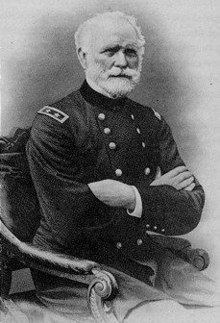 | ||
Born August 22, 1800Haysboro, Tennessee ( 1800-08-22 ) Commands held 2nd U.S. DragoonsMilitary Department Number FiveDepartment of OregonDepartment of the West Battles/wars Indian WarsSeminole WarsBlackhawk WarSioux WarsMexican-American WarPig WarUtah WarBleeding KansasAmerican Civil War Books A Report of the Proceedings of a Council Held at Fort Pierre by General Harney with a Delegation of Nine Tribes of the Sioux Indians Allegiance United States of America, Union | ||
William Selby Harney (August 22, 1800 – May 9, 1889) was a cavalry officer in the U.S. Army during the Mexican-American War and the Indian Wars, and a general during the Civil War. He was born in what is today part of Nashville, Tennessee, but at the time was known as Haysborough (Haysboro).
Contents
- Early military career
- Mexican American War
- Death of a Slave Hannah
- Grattan Massacre
- Civil War
- Historic home
- Places named for William Harney
- References
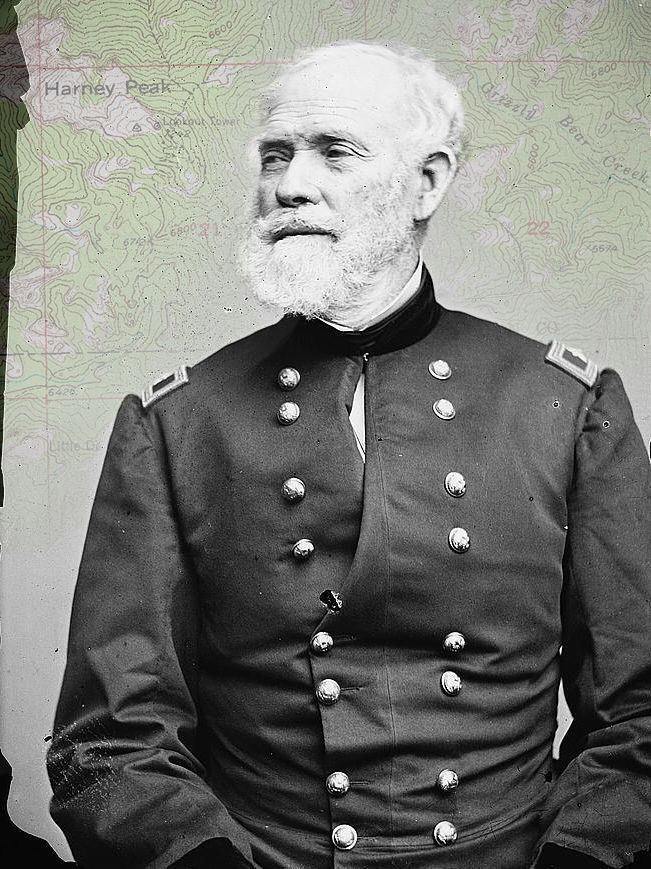
Early military career
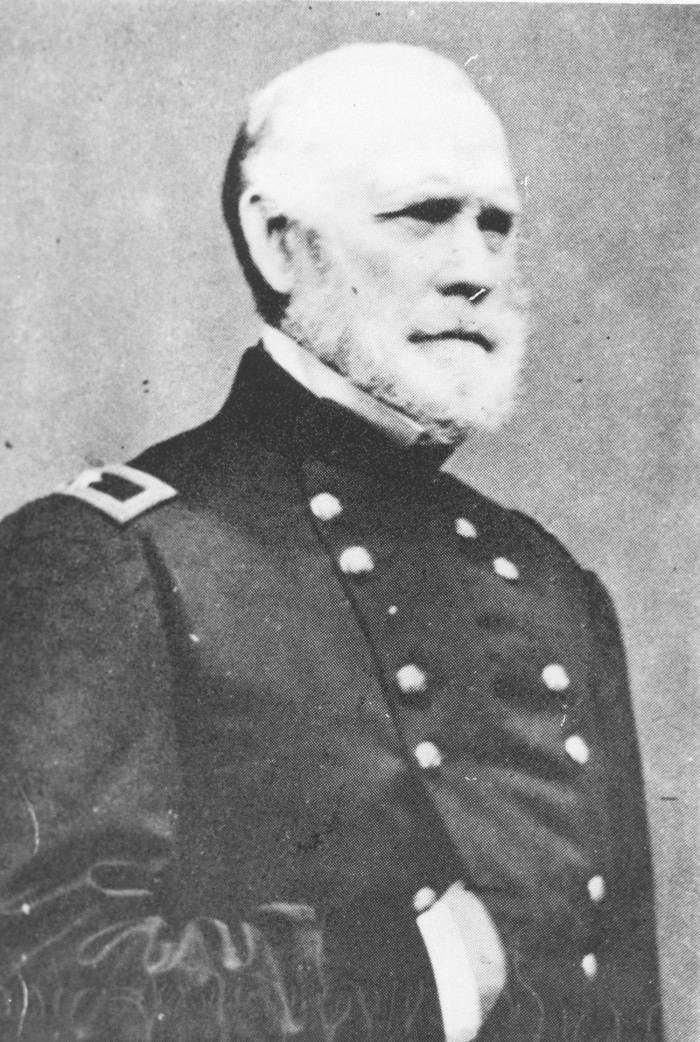
William S. Harney's military career was initiated by his brother, Dr. Benjamin F. Harney, then an Army surgeon in Baton Rouge, Louisiana. He asked Andrew Jackson, hero of the War of 1812 and current Commander of the Army of the South, to write a letter to the Secretary of the Navy asking for Harney's acceptance into the Navy. This occurred July 23, 1817. Harney visited his brother and met high-ranking military officers. He so impressed them that they arranged a commission for him as US Navy second lieutenant, signed by then President James Monroe. Harney instead chose to serve under Andrew Jackson in the Army. His first military assignment under General Andrew Jackson was in 1818, as a second lieutenant in the 1st U.S. Infantry. He forced the pirate Jean Lafitte to move his operations from the Louisiana territory to the Spanish Main.
Mexican-American War

During the Mexican-American War, he was appointed colonel and commanded the 2nd Dragoons. They were attached to John E. Wool's command during the Chihuahua Expedition and the Battle of Buena Vista. Harney joined Winfield Scott's Army as senior cavalry officer at the siege of Veracruz. He was temporarily in command of the 1st Brigade in David Twiggs' division, where he fought with distinction at the Battle of Cerro Gordo, and received a promotion to brevet brigadier general. He returned to cavalry command during Contreras, Churubusco and the battles for Mexico City. Harney was an original member of the Aztec Club of 1847, which was composed of American officers who had served in Mexico.

On May 14, 1849, on the death of Bvt. Major General William J. Worth, Harney assumed command of Military Department Number Five, which comprised almost all of the settled portion of Texas.
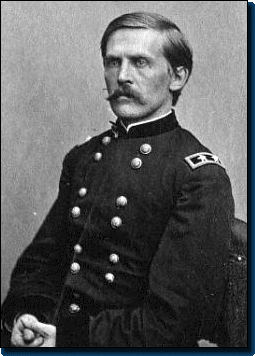
Harney was next assigned command of the Department of Oregon. During this time, he sent troops under Captain George E. Pickett to San Juan Island, precipitating the Pig War with British forces. Due to the altercations with the British, he was recalled by the Army. Briefly commanding troops during the Utah War, he was again recalled and placed in command of troops sent to deal with the guerrilla warfare of Bleeding Kansas. Promoted to brigadier general on June 14, 1858, Harney was one of the four general officers in the regular army at the opening of the Civil War.
Death of a Slave, Hannah
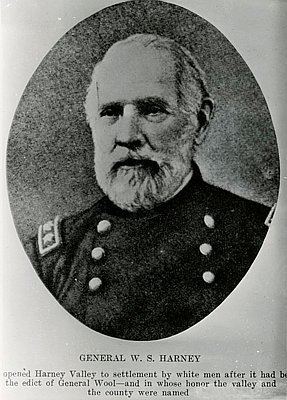
In June, 1834, (while serving as a Major in the Paymaster Corps, Jefferson Barracks, St. Louis, Mo.), Harney was charged with the death of a female slave named Hannah by whipping her. On June 30, 1834, the Missouri Republican reported "an inquest was held at the dwelling-house of Major Harney"..."on the body of Hannah"..."said slave possibly came to her death by wounds inflicted by William S. Harney". The story was also reported by the Missouri Intelligencer and the Cincinnati Journal, the latter reporting Harney as "a monster!" Harney then moved east to Wheeling, Virginia, to remove himself when the public became aware of the death. During this time the case was turned over to the St. Louis County Prosecutor and Harney received several letters from relatives advising him of "a mob"..."you cannot therefore return here"...and "do not think of returning to this place unless I advise you." In 1835, Harney did return when "the excitement goes off" and on March 24, 1835 was legally acquitted.
Grattan Massacre
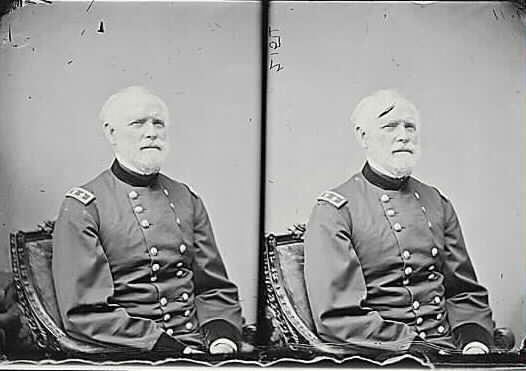
While on leave in Paris in 1854, Harney was recalled by the US government to lead a punitive expedition against the Sioux, after they killed a small US Army detachment in Nebraska Territory, an event called the Grattan Massacre. He led attacks against the Sioux culminating in the Battle of Ash Hollow in 1855, in which the Sioux were defeated. This was one of the opening battles in the more than two decades of the Plains Indian Wars.
Civil War
Harney commanded the Army's Department of the West at Jefferson Barracks in St. Louis, Missouri, in 1861. He was one of only four general officers in the Army at the start of the Civil War with Winfield Scott, John Wool, and David Twiggs. Due to the lack of any fixed retirement age at the time, all of them were over 60. At 61, Harney was nearly a decade younger than the next youngest (Twiggs) and the only one of the four who was not a veteran of the War of 1812. Missouri Governor Claiborne Jackson was pro-secession, but the majority of Missourians were Unionist. After the bombardment of Fort Sumter, President Lincoln called for troops to suppress rebellion. Jackson refused, and began plotting with Confederate authorities to bring about Missouri secession by a military coup.
On May 10, 1861, Captain Nathaniel Lyon, commander of the St. Louis Arsenal, led a force of unofficial Unionist "Home Guards" to capture a force of state militia that were poised to seize the Arsenal—acting without any authorization from Harney, his nominal superior. The Camp Jackson Affair resulted in a bloody riot in St. Louis, and Harney was horrified.
The state legislature responded by reorganizing the militia as the Missouri State Guard, and authorizing it to resist "invasion" by Federal troops. Harney tried to calm the situation but his military objectiveness led to his ultimate downfall. He agreed to the Price–Harney Truce with Guard commander Sterling Price, under which he agreed that the State Guard would control most of Missouri, while Federal troops stayed near St. Louis. Missouri Governor Claiborne Jackson, who favored secession, swore allegiance to the Union in the deal.
This was not acceptable to Unionist leaders in Missouri, such as Republican leader Frank Blair, as Price did nothing to prevent the organization of pro-Confederate forces or protect Unionists in his territory. Worsening matters was the fact that Harney was a Tennessee native, which made his loyalty to the Union suspect. Blair reported all this to the Lincoln administration in Washington, and was authorized to replace Harney with Lyon. Blair acted on 30 May.
Harney was called to Washington to discuss the situation. He was captured by Confederates en route and was offered a command by Confederate General Robert E. Lee. He turned down the offer, but because he was a Tennessean, his captors graciously released him and allowed him to continue on to Washington.
Harney remained in Washington, serving in various administrative positions. When it became clear that he would not receive another field command, he retired in 1863 and was awarded and breveted to major general in 1865, in recognition of his long and distinguished career.
Historic home
The Maj. Gen. William S. Harney Summer Home in Sullivan, Crawford County, Missouri, is privately owned by the Harney Mansion Foundation. The Sullivan Chamber of Commerce cooperates with the foundation and can arrange visits to the home, which is listed on the National Register of Historic Places.
